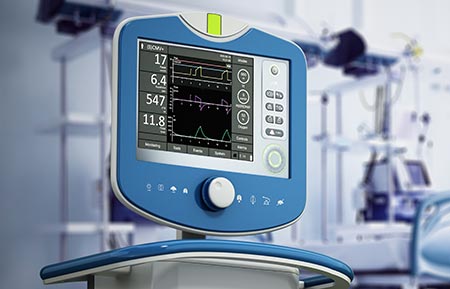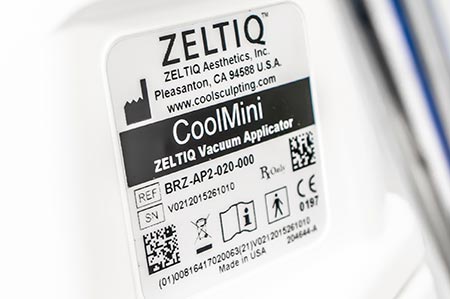Unique Device Identification (UDI) Compliance for Medical Devices
or call (651) 353-7806
Home » UDI Implementation
Reduce Approval Delays With Proper UDI Implementation
UDI implementation is a required step in bringing medical devices to market, but it’s often where companies run into preventable issues. Many teams struggle with selecting the right issuing agency, formatting barcodes, managing data across systems, or submitting to the FDA’s GUDID correctly. These missteps can lead to submission delays, compliance failures, and avoidable costs.
Isaac Erickson helps companies get their UDI systems right from the start. Whether you’re preparing your first UDI submission or refining an existing one, Isaac will guide your team through each stage of the process. Our goal is to make your UDI program accurate, audit-ready, and fully aligned with FDA 21 CFR Part 830 and global regulatory expectations.
Common UDI Challenges And How Isaac Can Solve Them
Confusion Around Structure And Standards
Many teams don’t fully understand how the Device Identifier (DI) and Production Identifier (PI) work together—or how to apply GS1, HIBCC, or ICCBBA standards. Isaac helps clarify the structure, select the best issuing agency, and ensure your barcodes meet both technical and regulatory requirements.
GUDID Data Submission Issues
Formatting errors, incomplete records, or missing updates in the Global Unique Device Identification Database (GUDID) can trigger FDA rejections. Isaac walks you through the data entry process, verify submission accuracy, and troubleshoot issues before they become costly problems.
International Misalignment
FDA compliance alone isn’t enough. If you’re entering the EU or Canada, your UDI system also needs to meet EUDAMED or Health Canada’s specific requirements. Isaac creates harmonized strategies across regions so you can avoid rework and stay compliant in all your target markets.
Integration With Labeling And Quality Systems
UDI touches multiple systems—labeling, supply chain, quality, and post-market surveillance. Isaac helps ensure your UDI program integrates with these systems, so updates are consistent, traceable, and documented properly.
Other IMDS Services

510(k) FDA Compliance Submissions
Isaac aligns each submission with FDA expectations to streamline review, avoid submission errors, reduce delays, and minimize the risk of AIQs.

Medical Device Labeling
Isaac helps companies close these gaps with a comprehensive, audit-ready review that aligns with FDA, EU MDR, and ISO standards.

International Product Regulations
Isaac can guide you through registration, documentation, and post-market obligations—so you can enter new markets without delays or costly setbacks.

Build a Scalable, Compliant UDI System
UDI compliance isn’t just about checking a regulatory box. It supports traceability, recall readiness, and overall patient safety. Isaac provides hands-on, strategic support to set up or fix your UDI implementation; so you can reduce risk, move faster, and stay compliant across global markets.
If you need help with initial UDI setup, global strategy, or resolving data issues, he’ll make sure your system is ready for submission and built to last.
or call (651) 353-7806
FREQUENTLY ASKED QUESTIONS
You Have Questions, We Have Answers
What are the key components of a UDI?
A UDI consists of two main parts:
- Device Identifier (DI): A mandatory, fixed portion of the UDI that identifies the manufacturer and specific version/model of the device.
- Production Identifier (PI): A variable component that may include lot/batch number, serial number, expiration date, or manufacturing date.
The UDI must be encoded in both human-readable and machine-readable formats (barcode or RFID) and comply with a government-approved issuing agency, such as:
- GS1 (Global Standard)
- HIBCC (Health Industry Business Communications Council)
- ICCBBA (For Blood & Biologic Devices)
What are the key regulatory requirements for UDI compliance?
UDI requirements differ across regulatory bodies:
- FDA (U.S.) – UDI must be submitted to the Global Unique Device Identification Database (GUDID) for all Class II and III devices (and some Class I).
- EU MDR (Europe) – UDI compliance is mandatory for EUDAMED, with stricter data submission and post-market tracking.
- China (NMPA) – Requires localized UDI submission and a China-specific UDI database.
- Other Markets (Japan, Brazil, Canada, etc.) – Have varying adoption timelines and database structures.
Understanding regional variations is critical to ensuring global compliance and avoiding market-entry delays.
How do we select the right UDI issuing agency (GS1, HIBCC, ICCBBA)?
The choice of a UDI issuing agency depends on the device type and industry preferences:
- GS1 – The most commonly used system, suitable for most general medical devices and widely recognized worldwide.
- HIBCC – Often preferred for hospital-based devices with custom serialization needs.
- ICCBBA – Required for biologic and blood-related products.
Manufacturers should align their choice with regulatory requirements and existing supply chain standards to ensure smooth integration.
